Young children live in their senses; all that they learn comes from direct and swift experience of daily life. Through creative exploration–action and interaction with everything around them–children gather not only the basic foundations of intellectual knowledge but a lasting appreciation for the world they have entered.
The Children’s Garden is designed as a sensory-rich environment for young children to discover what awaits in the world and to grow all their greatest capacities within. In addition to loving teachers, who are trained and experienced in living arts curriculum, our school embodies a natural and rhythmic, calm, warm, home-like environment for children to experience the world at their own pace and learn through their senses. We practice a relationship-based care model that complements home life and provides a learning environment in which your child will flourish. We recognize that human relationship and activity are essential tools for all foundational skills for life. In early childhood, daily life experience is the “curriculum” through which children experience healthy life rhythms and routines.
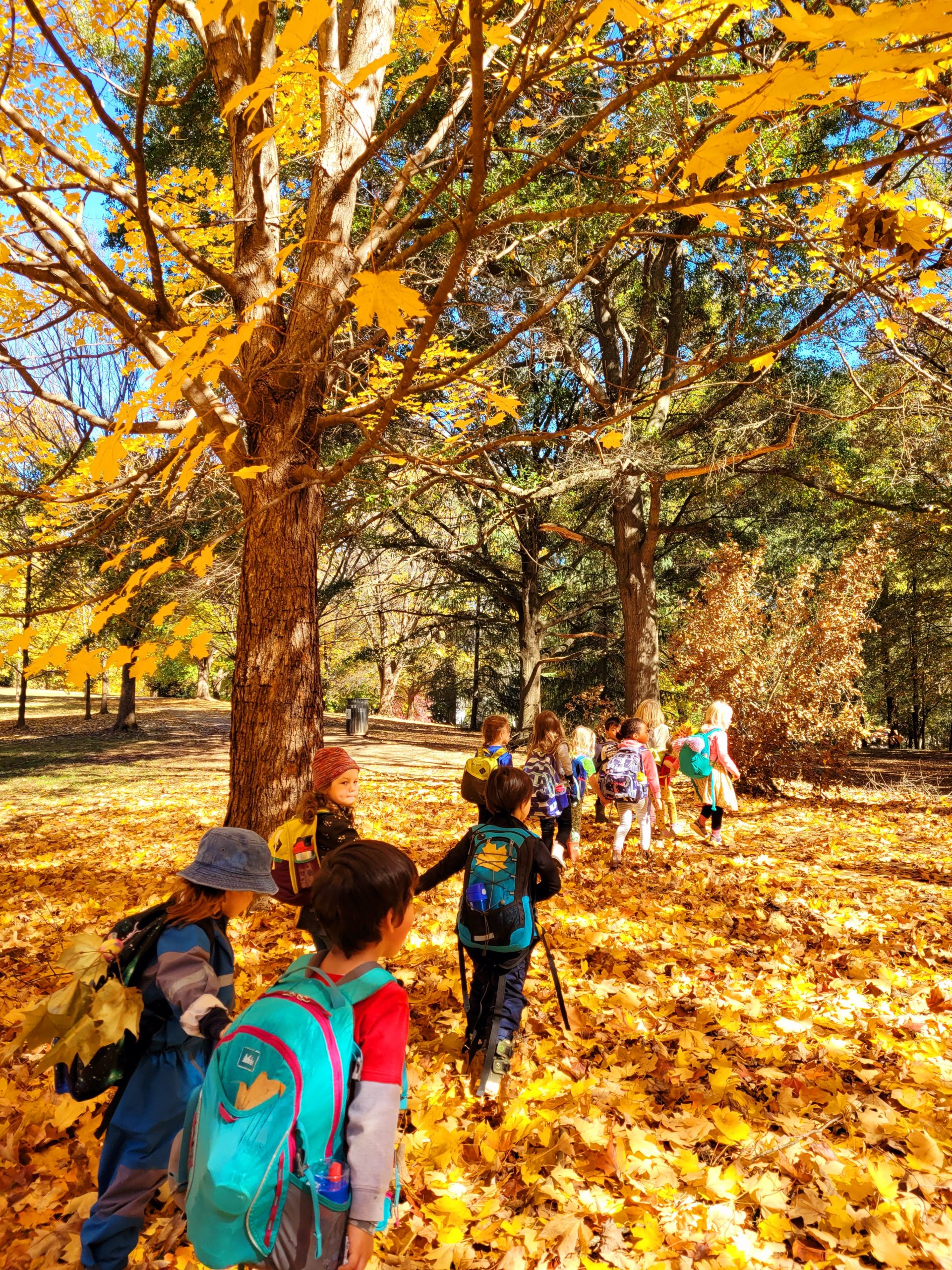 Living Arts Care and Learning
Living Arts Care and Learning
The Children’s Garden’s approach to the joyful way of “learning through living” is the basis of our work with children. Through the living arts, we are able to create a very natural daily life experience at school as the “curriculum”. When children experience healthy life rhythms and routines the beauty, comfort, security, and connection to the living world naturally form the basis for meaningful learning.
We “meet each child” where we find them in their growth, development and personality. Understanding the heart-centered relationship with a child as we do, teachers are very naturally, loving stewards of encouraging the children’s individual capacities, strengthening will and a nourished, creative, imaginative spirit within. Each class envelopes a caring community with meaningful practices and activites, fostering reverence and confidence in each child. The children find their way to an intimate link with the natural world through daily time spent in the outdoors on our play garden yard and outside classroom, as well as in the woods and fields of our beloved Grant Park.
We recognize that young children learn primarily through imitation and example. With that knowledge, great care is taken to provide an environment where teachers are mindfully and continually modeling behavior that is worthy of a child’s imitation. Teachers are the warm and steadfast presence of kind, firm nurturing guidance for each child and the whole class. As an essential part of a child’s growth and development, teachers understand healthy expectations (age and developmentally appropriate responsibilities). These expectations allow children the space and time to rise in what is being asked of them.
Through imaginative free play, the groundwork for learning is founded. We see intellects grow and imaginations emerge.
Meaningful Activity & Imaginative Free Play
Meaningful activities such as circle and singing, watercolor painting, simple crafts, story telling, baking, nature walks, rich imaginative free play and mixed-age activity among the classes providing children the time to be both a younger and older “sibling”, form the fabric of a child’s daily experience in our school. And the seasonal organic food, we prepare with the children, is shared and served with set tables in a family-like atmosphere.
Experiential and sensory opportunities during play, household tasks, food preparation, nature exploration, water play, stories, puppetry, handwork, singing, rich language development and movement are integrated into daily rhythms to create an atmosphere that is truly meaningful to each child.
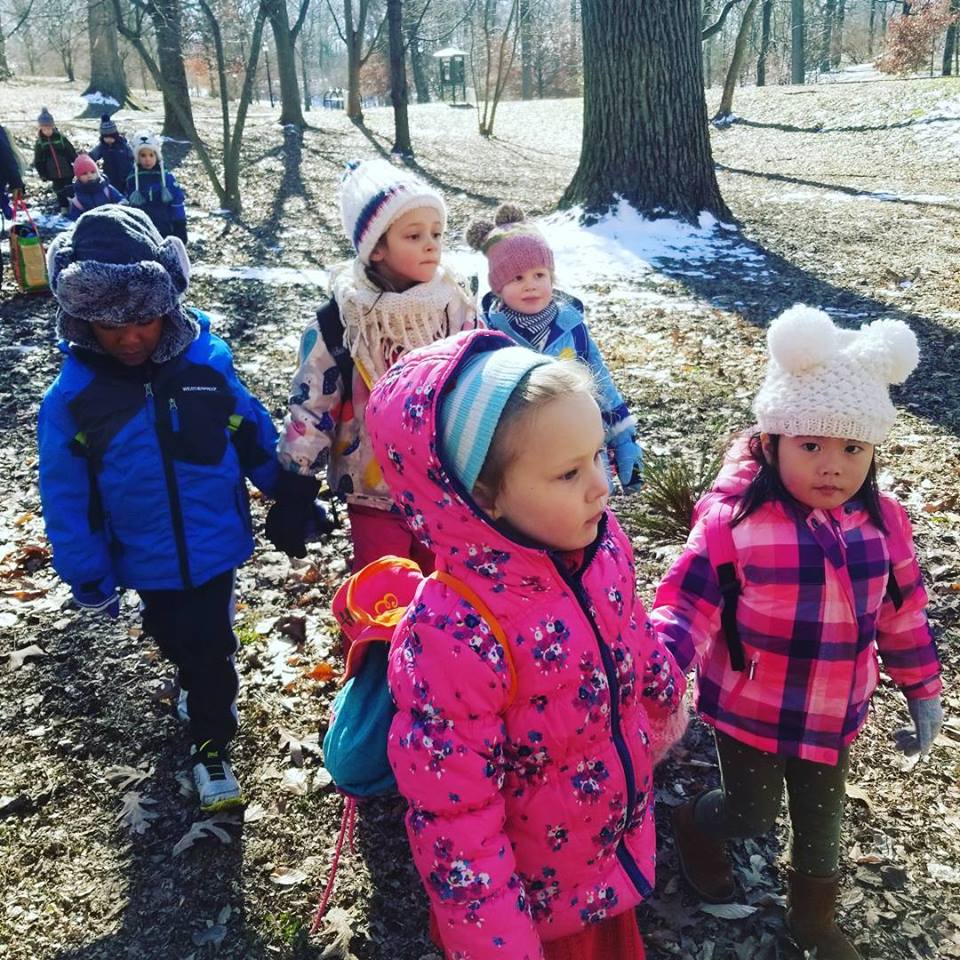 Day by day, our children are enveloped in an appreciation for the seasons, and for the mineral, plant and animal kingdoms, guided by their own experiences. For example, children in our 3 to 5 year old group enjoy outdoor mornings in Grant Park two days a week – hiking, playing and exploring, working together and eating snack. Mondays and Fridays the children remain on site in our play garden yard and outside classroom, allowing us to do painting, baking and handwork together.
Day by day, our children are enveloped in an appreciation for the seasons, and for the mineral, plant and animal kingdoms, guided by their own experiences. For example, children in our 3 to 5 year old group enjoy outdoor mornings in Grant Park two days a week – hiking, playing and exploring, working together and eating snack. Mondays and Fridays the children remain on site in our play garden yard and outside classroom, allowing us to do painting, baking and handwork together.
Daily experiences of colorful nature stories and fairy tales paint a rich tapestry for the young child, encouraging a sense of wonder and close relationship to nature, her elements, and inhabitants. These stories, along with songs and verses in our daily circle time and throughout the rhythm of the day, follow the seasons and come to life in the children’s imaginations. Many of these tales and nature stories address a fine moral sense for knowing right from wrong.
Due to the vast amount of time spent outside, it can be said that the myriad experiences inspire a joy for and knowledge of the earth’s gifts in the children we care for: our paint is all mineral derived and fully biodegradable, we use 100% natural materials for play including sand, trees parts, rocks and sticks, water, wood, metal kitchen and yard tools, sheep’s wool, wood, beeswax crayons, wool yarn and thick wooly felt. For surface cleaning and daily work, aromatic essential oils form the base of our own table and surface cleaner; soothing lavender and vegetable-glycerin soap washes our hands.
In our classes, children are encouraged to share, to work together, to care for our things and for each other, to try first and ask for help if needed, to listen to the speaker, and to respect the needs of others.
The behavior of the children is shaped by what surrounds them. Kindness is practiced by teachers and encouraged in the children and they learn to trust the adults and other children. Children craft many items as gifts made for family members. A healing basket in each class comes out with salve and other special items when a friend is hurt and we tend to them. The children check on one another if it’s noticed that a friend is a bit sad, had a bump or scrape, often asking, “are you okay and do you need a teacher”? They hold their partner’s hand with loving care and a desire to work together and help each other on our walks and hikes.
Each child has a little cubby with hooks for hanging a pack, bag or coat. The “symbol” each child receives from their teacher at the start of the year is hanging at the cubby each morning, so that the child can find their place to hang their things. Children cherish their symbols, and the act of taking care of their personal belongings at the cubby. There’s a small, personal hand towel hanging at the cubby too, for drying hands. And when using the outdoor potty or washing hands, each child finds the supplies they need set up by teachers: a big sink on the yard for hand-washing with a soap pump, everything so simply laid out for child success and a sense of calm. The physical space at our school allows a child the sense of simplicity and freedom to move comfortably through the day,
The daily snack we make together connects social rituals with sustainability in such a natural way. Reverence and gratitide abound in our classes.
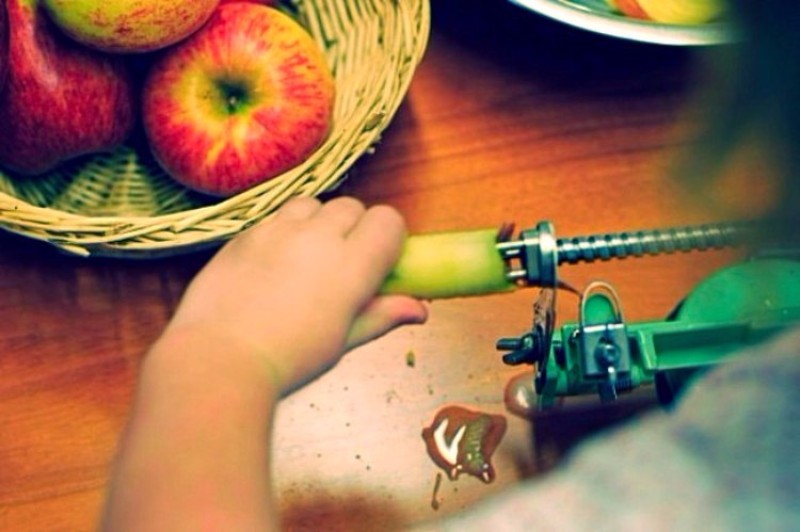 Daily snacks are seasonal, communal and made of organic ingredients, with every member of the class contributing to the making of their creation: oatmeal with maple syrup, hummus & veggies, vegetable soup, fresh apple sauce and our own bread rolls & pots of tea. Snacks are served in the school’s stainless steel bowls or containers with emphasis on whole food for nourishment and clear water for drinking. We sit together, thankful for our food, sharing and passing bowls, cups of tea or wrapped up food, like a big family. We clear and clean up our own dishes, cups, utensils and cloth napkins, tending to our work with care.
Daily snacks are seasonal, communal and made of organic ingredients, with every member of the class contributing to the making of their creation: oatmeal with maple syrup, hummus & veggies, vegetable soup, fresh apple sauce and our own bread rolls & pots of tea. Snacks are served in the school’s stainless steel bowls or containers with emphasis on whole food for nourishment and clear water for drinking. We sit together, thankful for our food, sharing and passing bowls, cups of tea or wrapped up food, like a big family. We clear and clean up our own dishes, cups, utensils and cloth napkins, tending to our work with care.
Loving Teachers in a Home-Like Setting
Our teachers create an authentic, loving, safe environment that allows children to feel the warmth and connection of a caring community. As educators trained in the living-arts, they revere home life and the caring relationship each has with the individual children in their class. Our classes have a low child-to-teacher ratio, led by a team of two fully trained teachers, who consistently meet and guide their children every day.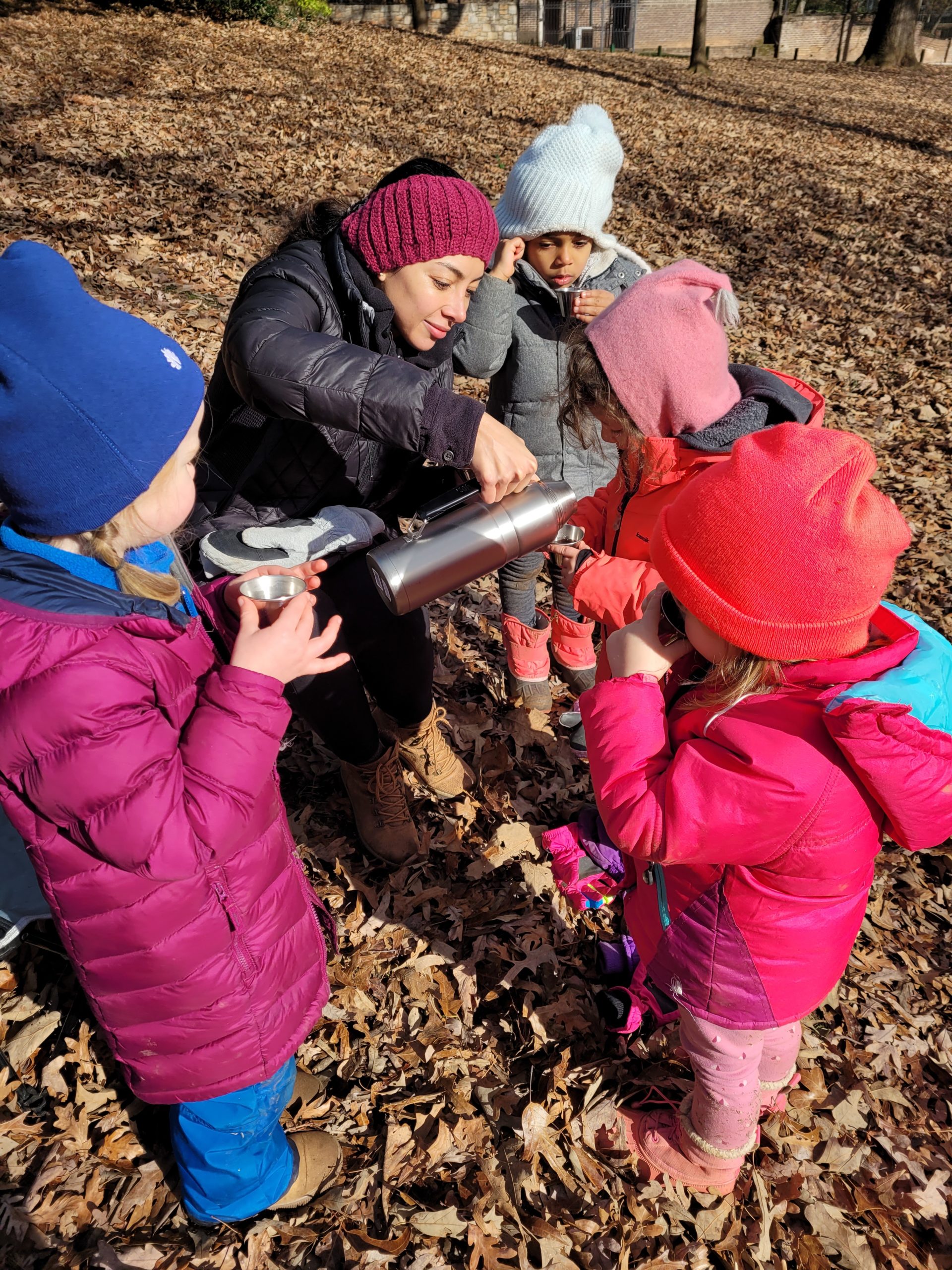
Teachers hold a deep reverence for and love of childhood. To us, a child’s senses are to be nourished while the child is guided and given time and space to grow. Each day in our school, the children can satisfy their natural curiosity and immersion into joyful learning, all while being “set up for success” as they deepen their capacities, fostering a healthy will and feeling of “I can”. Regular daily, weekly and monthly rhythms help children learn to adapt to daily routines and respond beautifully to consistency and repetition. This practice provides the children a supportive and secure environment to explore and develop their independence. The sense of certainty a child experiences in this way allows him or her the time, space and freedom to reach their capabilities.
Teachers create Daily, Weekly and Seasonal Rhythms for the Children
These rhythms provide a balanced structure for the children, allowing them to flow with ease through their time with the group, as well as meeting expectations of the environment.
Why “Rhythm”?
Rhythm facilitates a means for children to feel, know and respond to what comes next (which yields joyful anticipation). It is through this knowing sense of certainty that children become free to create, learn and discover. The way we flow through the rhythm of our day ensures a sense of security for the children allowing them to feel trust with their teachers and environment. Quite simply, rhythm is a kind of constant backbone to the day for everyone, holding and moving us with calm predictability.
“Parents discover that when a rhythm is created, far from compromising their freedom, life actually begins to give more freedom. Children are more relaxed and comfortable, more secure, less anxious and stress-filled because they know that the adult they love and trust is guiding the flow of the day. They relax into this security and often are less clingy or demanding. They need not be preoccupied with making sure that their own needs are met and can be free to play imaginatively, to explore, to observe. For the adult, the possibility to predict what will happen when, to anticipate the sequence of the day with its more active and more restful periods, enables a possibility to imagine how she or he will spent time when a child is napping times or play with the deep engagement that is possible when the security of predictable rhythm underlies daily life. The alternative is a child who becomes preoccupied and at times obsessed with gaining adult attention, with manipulating the environment, or with gaining access to food continuously because she does not know what to anticipate and trust throughout a day. The child who knows, for example, that meals will come on a predictable rhythm, can spend energy on other things.” — Susan Grey Weber, Sophia’s Hearth
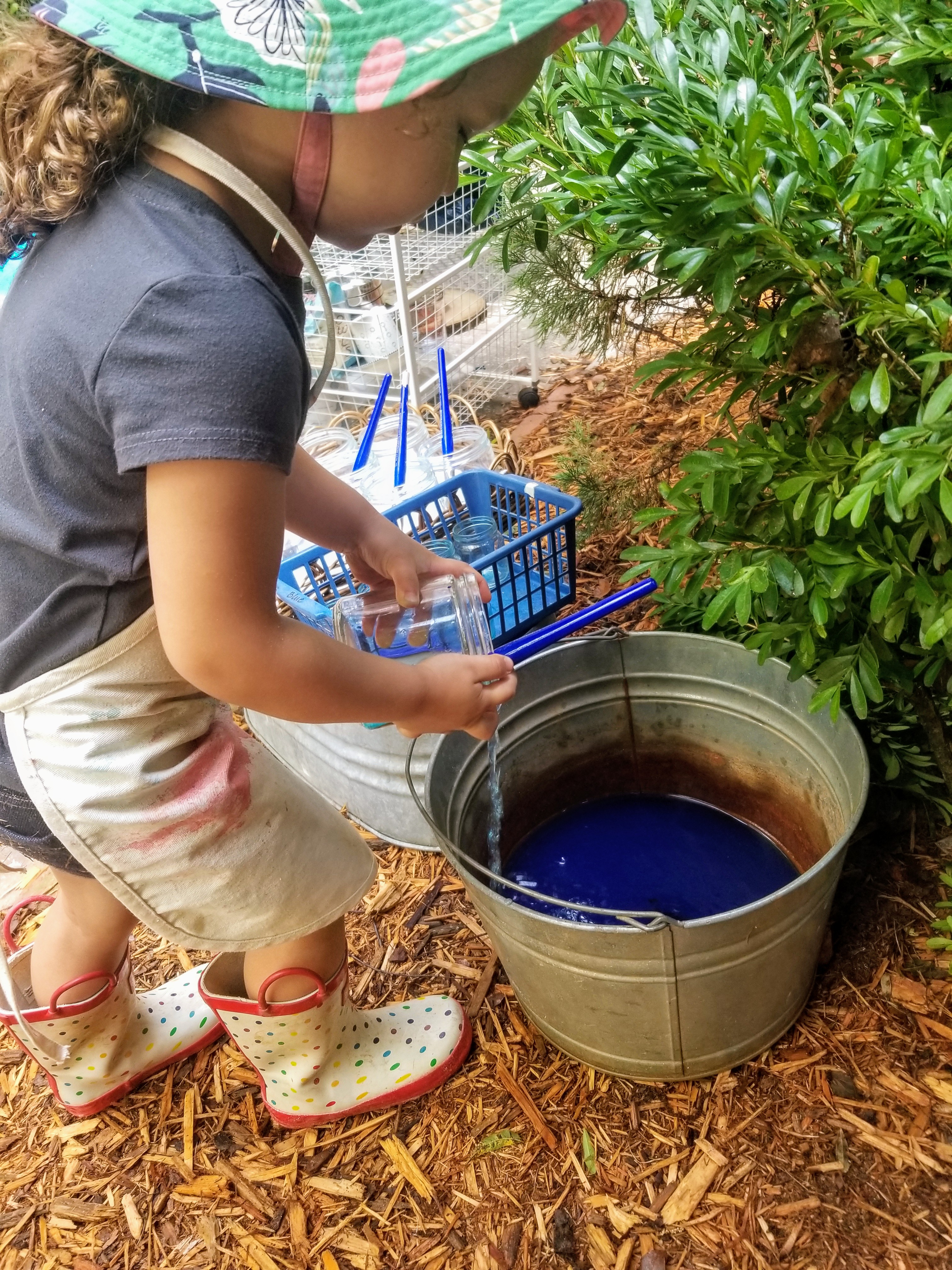
Healthy “Rhythms” create ~
- a feeling of calm and reassuring, consistent repetition for the children
- ample time for transitions that consistently occur and happen the same way each day
- greater harmony, collaboration and less desire to “push-back”
- an appreciation for the elements of the day, the week, the season
- a reverence and feeling of care for what we do
- a desire to follow the adult as a trusted, loving leader

